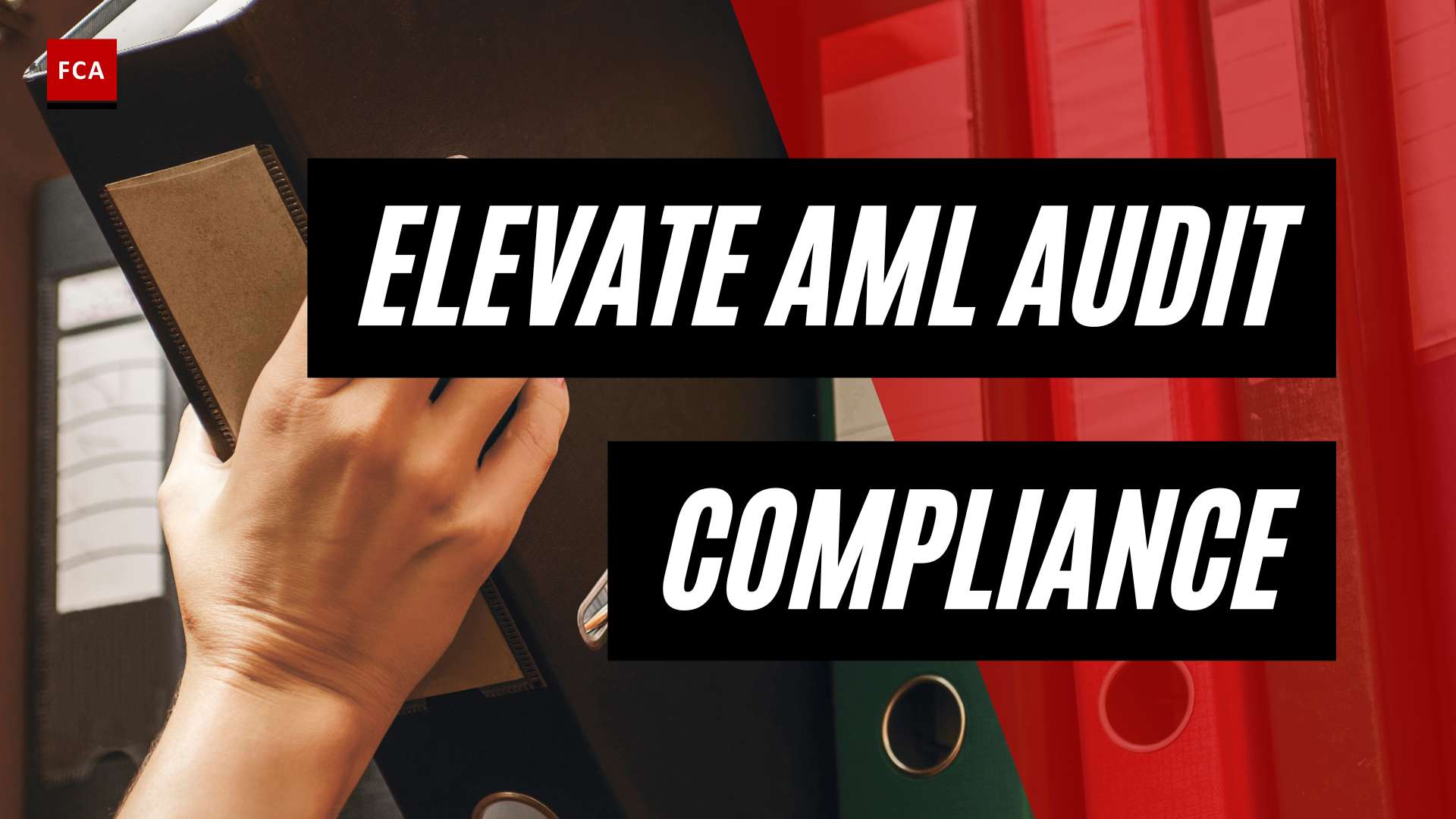Understanding the Importance of AML Compliance
Anti-Money Laundering (AML) compliance is a crucial element in the financial landscape. It plays a significant role in maintaining the integrity of markets and financial systems. This section will provide a brief overview of AML and discuss the role of compliance in securing the financial system.
Brief Overview of Anti-Money Laundering (AML)
Anti-Money Laundering refers to a set of procedures, laws, and regulations designed to halt the practice of generating income through illegal actions. In essence, it’s a system of checks and balances that prevent the legitimization of ill-gotten money.
AML laws and regulations target criminal activities including market manipulation, trade of illegal goods, corruption of public funds, and tax evasion, among others. AML compliance measures have increasingly become a cornerstone in the financial industry, ensuring that institutions are not complicit in laundering and illicit financial flows. For a more detailed discussion on AML compliance, refer to our article on bsa/aml compliance program.
The Role of Compliance in Securing the Financial System
Compliance plays a significant role in securing the financial system. It helps to maintain the integrity of an institution by ensuring adherence to regulatory standards, including currency transaction reporting requirements. Compliance programs aid in the detection and prevention of illicit activities, such as money laundering and terrorist financing, thereby safeguarding the institution and the financial system at large from potential abuse.
Effective compliance involves several key components, including a risk-based approach to AML compliance, comprehensive AML training and awareness programs, enhanced due diligence for high-risk customers, and the utilization of AML compliance software solutions. These measures help to ensure that financial institutions are not susceptible to money laundering schemes and are adhering to regulatory obligations.
For instance, one of the key AML compliance measures under the Bank Secrecy Act is the implementation of a robust Customer Identification Program, as outlined in our article on USA PATRIOT Act Customer Identification Program. This program is crucial in verifying the identity of individuals who wish to open an account, thereby preventing identity theft, fraud, and money laundering.
Ultimately, AML compliance is not just about adhering to laws and regulations—it’s about safeguarding the financial system from illicit activities and ensuring its stability and integrity. For more insights into AML compliance best practices, refer to our article on AML compliance best practices.
The USA PATRIOT Act and Bank Secrecy Act
Understanding the legal framework that governs anti-money laundering (AML) efforts is crucial in ensuring effective compliance. Two significant pieces of legislation in this context are the USA PATRIOT Act and the Bank Secrecy Act.
Key Provisions of the USA PATRIOT Act
Enacted in response to the 9/11 terrorist attacks, the USA PATRIOT Act (Uniting and Strengthening America by Providing Appropriate Tools Required to Intercept and Obstruct Terrorism Act) significantly expanded the scope of AML and counter-terrorism financing regulations. Key provisions include:
- Mandatory Customer Identification Program (CIP) as laid out in Section 326, requiring financial institutions to verify the identity of their customers.
- Enhanced due diligence procedures for correspondent accounts and private banking accounts.
- Prohibition of correspondent accounts with foreign shell banks.
- Increased civil and criminal penalties for money laundering.
For a more detailed discussion on the USA PATRIOT Act, read our article on USA PATRIOT Act Customer Identification Program.
Key Provisions of the Bank Secrecy Act
The Bank Secrecy Act (BSA) of 1970 is one of the earliest and most important pieces of AML legislation. Its main provisions include:
- Requirement for banks to report cash transactions exceeding $10,000 via the Currency Transaction Report (CTR).
- Mandate to report suspicious activity that might signify money laundering, tax evasion, or other criminal activities.
- Requirement to maintain records of cash purchases of negotiable instruments.
- Implementation of a robust AML program.
For more information on the BSA and its reporting obligations, refer to our article on Bank Secrecy Act Reporting Obligations.
The Intersection of the Two Acts
The USA PATRIOT Act and the Bank Secrecy Act together form a substantial part of the regulatory framework governing AML efforts in the United States. While the BSA laid the groundwork for AML regulations, the USA PATRIOT Act expanded these requirements, particularly in relation to customer identification, due diligence, and the reporting of suspicious activities.
Both acts mandate financial institutions to comply with currency transaction reporting requirements, a key aspect of AML compliance. The information gathered through these reports plays a pivotal role in identifying, tracking, and preventing illegal financial activities.
Compliance with the USA PATRIOT Act and the BSA is not a static process but requires continuous monitoring, evaluation, and adjustment. Financial institutions are encouraged to adopt a risk-based approach to AML compliance, which allows them to allocate resources efficiently based on the level of risk associated with specific customers or transactions.
As the landscape of financial crime continues to evolve, so too does the regulatory framework aimed at combating it. Remaining up-to-date with these changes is a vital part of maintaining an effective AML compliance program.
Currency Transaction Reporting Requirements
Making sense of the currency transaction reporting requirements is a crucial aspect of Anti-Money Laundering (AML) compliance. These requirements involve Currency Transaction Reports (CTRs), the $10,000 reporting threshold, and certain exceptions and exemptions.
Definition and Purpose of Currency Transaction Reports (CTRs)
Currency Transaction Reports (CTRs) are documents that U.S. financial institutions are required to file for each deposit, withdrawal, exchange of currency, or other payment or transfer, which involves a transaction in currency of more than $10,000. These reports are a vital part of the country’s effort to combat money laundering and other financial crimes.
The purpose of CTRs is to provide valuable data to law enforcement agencies for their investigations. The information in these reports can help authorities detect unusual or suspicious activities, which could be signs of money laundering, tax evasion, or other criminal activities.
The $10,000 Threshold for Reporting
The $10,000 threshold is a key component of the currency transaction reporting requirements. Any transaction involving more than $10,000 in cash must be reported. This includes single transactions or multiple transactions by or on behalf of the same person that add up to over $10,000 during one business day.
Financial institutions are required to aggregate multiple transactions if they have knowledge that they are by or on behalf of the same person and result in either cash in or cash out totaling more than $10,000 during any one business day.
It’s important to note that attempts to evade this reporting requirement, such as structuring transactions to fall just below the $10,000 limit, are illegal and can lead to serious penalties.
Exceptions and Exemptions to the Rule
While the $10,000 threshold applies broadly, there are some exceptions and exemptions. Certain businesses, typically ones that frequently deal with large amounts of cash as part of their normal operations, may be exempt from the reporting requirements.
Exceptions also exist for certain types of transactions. For example, transactions between a bank and a domestic bank, transactions between a bank and a department or agency of the U.S. government, and transactions between a bank and any person acting with respect to a transaction whose purpose is the sale of a good or service are usually excluded from the CTR filing requirement.
Understanding these exceptions and exemptions is critical for financial institutions to ensure they are in compliance while also efficiently managing their reporting workload.
Navigating the landscape of currency transaction reporting requirements can be complex. Financial institutions must have a strong grasp of these rules, as well as a robust AML compliance program in place to ensure they can effectively meet these requirements. Explore our other resources to learn more about the USA PATRIOT Act Customer Identification Program, AML compliance best practices, and risk-based approach to AML compliance.
Compliance Measures for Currency Transaction Reporting
Ensuring adherence to currency transaction reporting requirements is a key component of an effective Anti-Money Laundering (AML) compliance program. This involves implementing a robust AML program, establishing a reporting mechanism for currency transactions, and adhering to recordkeeping and retention requirements.
AML Compliance Program
A well-structured AML compliance program is the backbone of meeting currency transaction reporting requirements. This program should include a risk-based approach, customer identification procedures, ongoing monitoring, and regular AML training for employees.
The risk-based approach should consider factors such as the size and nature of the business, customer demographics, product offerings, and geographical locations. A key aspect of this approach is the enhanced due diligence for high-risk customers, ensuring tighter controls and monitoring for transactions that may pose a higher risk of money laundering.
Furthermore, the customer identification program, as mandated by the USA PATRIOT Act, aids in verifying the identity of customers and understanding their business activities. This is crucial for detecting and reporting suspicious transactions.
Reporting Mechanism for Currency Transactions
A well-defined reporting mechanism is crucial for meeting currency transaction reporting requirements. Financial institutions are required to report currency transactions over $10,000 to the Financial Crimes Enforcement Network (FinCEN).
This involves generating a Currency Transaction Report (CTR) within 15 days of the transaction and retaining a copy for five years. The CTR should include details such as the identity of the individual conducting the transaction, the amount and date of the transaction, and details of the financial institution where the transaction occurred.
In this regard, AML compliance software solutions can be highly beneficial in automating the reporting process, ensuring timely and accurate submission of CTRs.
Recordkeeping and Retention Requirements
According to FinCEN regulations and guidance, financial institutions must retain records of all Currency Transaction Reports and their supporting documentation for five years.
This not only ensures compliance with regulatory requirements but also aids in providing evidence in case of audits or investigations. Effective recordkeeping practices, facilitated by digital solutions, can help streamline this process and reduce administrative burden.
Remember, maintaining compliance with currency transaction reporting requirements is not only a regulatory obligation but also a crucial step in safeguarding the integrity of the financial system. Adherence to these measures, along with the application of AML compliance best practices, can significantly mitigate the risks associated with money laundering and other financial crimes.
Challenges and Solutions in Currency Transaction Reporting
Navigating the realm of AML compliance and meeting currency transaction reporting requirements can present certain challenges for financial institutions. However, by understanding these obstacles and adopting effective strategies, they can ensure robust compliance and contribute towards securing the financial system.
Common Challenges in Complying with CTR Requirements
Several challenges can arise when attempting to adhere to currency transaction reporting requirements. These can range from identifying transactions that meet the $10,000 reporting threshold, to managing the administrative burden of filing multiple reports, and ensuring accuracy in the data reported.
Institutions may also struggle with identifying and tracking exemptions to the reporting rule, which can lead to errors and potential regulatory penalties. Additionally, the evolving nature of financial crimes necessitates continuous updates to compliance policies and procedures, which can be resource-intensive.
Finally, the onus of training staff members on regulatory requirements and ensuring their adherence to these rules can pose an additional challenge. For a deeper understanding of these obligations, refer to our guide on Bank Secrecy Act reporting obligations.
Solutions and Best Practices for Effective Compliance
Despite these obstacles, practical solutions and best practices can help institutions navigate the landscape of currency transaction reporting. A few key strategies include:
-
Implementing a Robust AML Compliance Program: A comprehensive BSA/AML compliance program serves as the foundation for meeting reporting requirements. This program should be tailored to the institution’s specific risk profile and encompass customer identification, transaction monitoring, and timely reporting.
-
Utilizing AML Compliance Software: Leveraging AML compliance software solutions can streamline the process of identifying, tracking, and reporting large currency transactions. Such tools can automate reporting tasks, reduce human error, and enhance efficiency.
-
Adopting a Risk-Based Approach: Embracing a risk-based approach to AML compliance allows institutions to allocate resources effectively. This involves identifying high-risk customers and transactions, and applying enhanced due diligence measures accordingly. Learn more about enhanced due diligence for high-risk customers.
-
Training and Awareness Programs: Regular AML training and awareness initiatives can ensure that staff members understand their roles in compliance and are up-to-date with changes in regulations.
-
Staying Informed about Regulatory Changes: Compliance officers should regularly consult FinCEN regulations and guidance to stay abreast of changes in reporting requirements.
-
Continuous Monitoring and Auditing: Regular audits can help detect any compliance gaps and rectify them before they become larger issues.
By implementing these best practices, institutions can overcome challenges and meet their currency transaction reporting obligations effectively. For more insights into effective AML strategies, explore our resource on AML compliance best practices.









